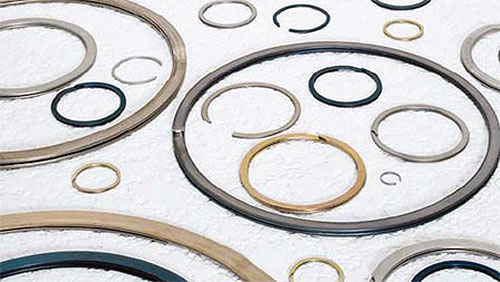Retaining rings are fasteners that hold together components on a shaft when installed in a groove. There are three main types of retaining rings; tapered section, constant section and spiral.
Tapered section rings are characterized by their decreasing thickness from the center of the ring out to the ends. These rings can be mounted either axially or radially. The taper is there to ensure full contact with the component when installed.
Constant section retaining rings, as the name implies, have a constant thickness around the circumference of the ring. When installed, unlike tapered rings, constant section rings do not maintain uniform contact with the entire component. They take on an elliptical shape and make contact with the component at just a few points.
Spiral retaining rings are installed into the housing or onto the shaft making full contact with the component.
Die stamping is a traditional method of producing retaining rings, along with newer methods such as coiling. Rings can be made from many materials including carbon steel, stainless steel, and special alloys such as those involving copper alloys.
Selecting a retaining ring involves considering a few key factors. One of the first may be the requirement to adhere to any existing standards such as MIL or Aerospace standards. These will help determine if the retaining ring must be constructed from a special material or operate in special conditions.
Beyond any standard’s compliance issues, the most important and relevant variables are the diameter of the shaft or housing and the width and diameter of the groove. Chances are there may be an existing type of ring groove that has to be matched.
Next, consider the load ratings. What types of loads must the ring endure? Also, don’t forget to take into account any installation stress.



Leave a Reply
You must be logged in to post a comment.